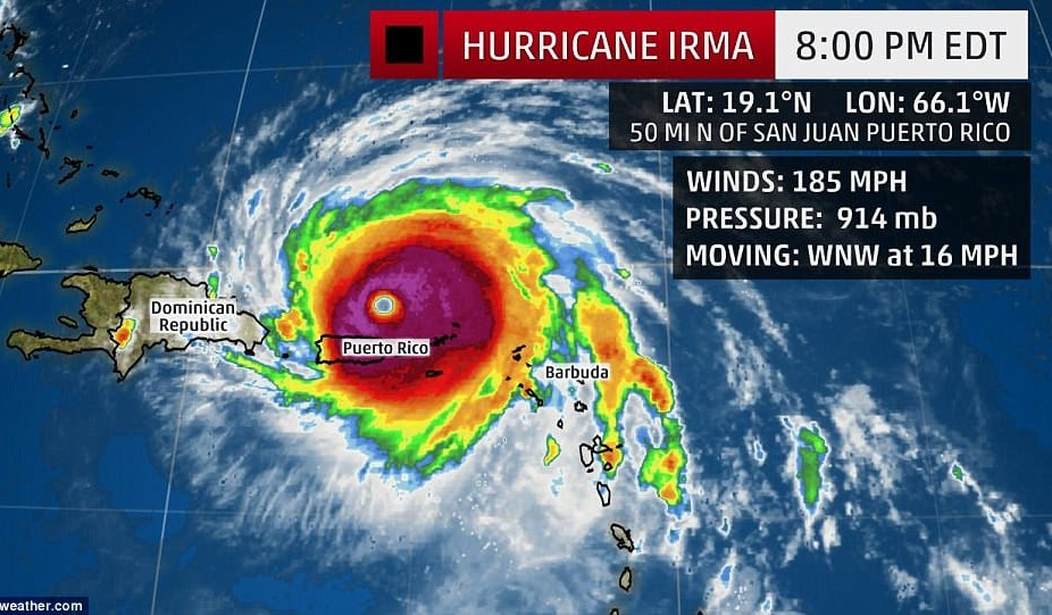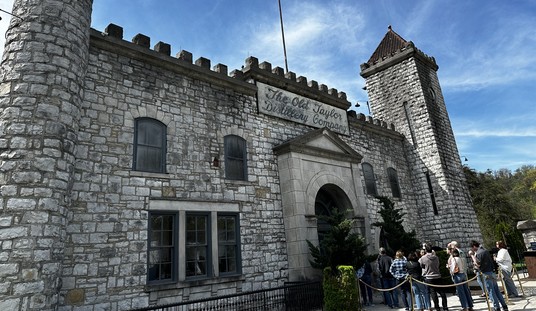The 2017 North Atlantic hurricane season has the climate change alarmists out in full force.
These activists claim that man-made global warming has made the Gulf of Mexico warmer and the air more humid, thereby making tropical cyclones — called hurricanes in the North Atlantic — more frequent and more intense. They demand we reduce our carbon dioxide (CO2) emissions to lessen the “increasing” hurricane threat.
Even scientists who should know better are promoting the hurricane/global warming connection. Dr. Gregory Flato — a Canadian government scientist who is vice chair of the United Nations Intergovernmental Panel on Climate Change working group that reports on the causes of climate change — maintains:
There’s also an expectation that as the sea surface temperatures increase, that the intensity of very intense hurricanes will become larger.
Dr. Michael Mann of Pennsylvania State University has made similar claims, asserting that the potential intensity of hurricanes and other large storms has risen as a result of climate change.
But basic observations and meteorological science do not support their claims.
Meteorologist Dr. Roy Spencer, a principal research scientist at the University of Alabama in Huntsville and an expert on tropical cyclones, explains:
[M]ajor hurricanes don’t really care whether the Gulf [of Mexico] is above average or below average in temperature.
Similarly, in a research paper published in March 2017, M. Mohapatra and V. Vijay Kumar, both of the India Meteorological Department, state:
[T]here is a decreasing trend in the tropical cyclone number over the North Indian Ocean in recent years, though there is an increasing trend in the sea surface temperature.
That ocean temperature rise in the Gulf of Mexico will not increase hurricane frequency has been part of fundamental meteorology since the 1970s. America’s “hurricane guru,” the late Dr. Bill Gray — emeritus professor of atmospheric science at Colorado State University (CSU) and the head of the Tropical Meteorology Project at CSU’s Department of Atmospheric Sciences — showed in peer-reviewed research that the seasonal hurricane frequency is determined by six climatological factors:
1. The rotational tendency, or vorticity, already present in the atmosphere. Low vorticity lessens the likelihood of a hurricane forming.
2. Pressure gradients determined by latitude. Low pressure gradients lessen the likelihood of a hurricane forming. Within 4 to 5 degrees of the equator, pressure gradients are too weak for hurricanes to form.
3. Wind shear, the changes in wind speed and direction that occur between layers in the atmosphere. Low wind shear allows the whole system in a growing hurricane, from sea level up to around 15,000 meters, to turn together. This helps to keep the storm intact and strengthening. High wind shear essentially cuts the top off a cyclone before it can become a hurricane.
4. Ocean thermal energy as indicated by temperatures to a depth of 60 meters. Temperatures in the Gulf and other hurricane formation regions are always above the critical value of 26.7 degrees Celsius necessary to spawn hurricanes at this time of year. Therefore, like trying to put more water into a full bucket, higher ocean temperatures have relatively little effect on the frequency or intensity of hurricanes.
5. The rate of change of temperature with altitude. High rates of change encourage hurricane formation.
6. Relative humidity in the mid-troposphere, a layer centered at about 5 km above the surface.
Of these six factors, only wind shear has been exceptional this year in the Gulf of Mexico.
It was very low wind shear, not temperature, vorticity, humidity, or anything else, that is therefore the main cause of the high activity in this year’s hurricane season. And wind shear is a natural phenomenon that varies across the globe and is determined by a host of meteorological factors, none of which are under human control.
The global warming/hurricane connection completely falls apart when one looks at the observational data.
For example, during the 1945-1977 cooling period, when ocean temperatures worldwide were undoubtedly lower than today, we witnessed stronger hurricanes than now. Hurricane Camille, the second-most intense tropical cyclone to strike the U.S. on record, slammed into Mississippi as a category 5 (the strongest) hurricane on August 18, 1969, producing a storm surge of 7.3 meters. Hurricane Flora struck in September 1963, killing over 6,000 people. This was the highest number of fatalities for a tropical cyclone in the Atlantic Basin since the 1900 Galveston Hurricane, which may have claimed as many as 12,000 lives.
The strongest tropical cyclone on record worldwide was not recent, either. It was the 2,200 km-wide “Super Typhoon” Tip which made landfall in southern Japan on October 19, 1979, immediately following the global cooling period (by contrast, Irma was about 680 km in diameter; Harvey about 400 km).

The biggest storm surges worldwide were 14.5 meters in Australia in 1899 and 13.6 meters in Bangladesh in 1876. During the warmer 21st century, no tropical cyclone was strong enough to generate a surge greater than 10 meters.
The fact that hurricanes and other tropical cyclones are not caused by — or even significantly enhanced by — man does not give us an excuse to do nothing about them, however.
Florida and Texas need to engage in “vertical evacuation” by building multistory storm shelters that allow residents to take refuge above the storm surge, instead of today’s ineffective “horizontal evacuation,” forcing people to flee the waves on clogged highways. The U.S. should look to India’s storm shelter network for an example of success in this regard — no one need walk more than one kilometer anywhere on India’s Bay of Bengal coast (where the vast majority of India’s tropical cyclones hit) to get to a shelter. If India can afford it, why not the U.S.?

It is time to develop improved early warning systems and more storm shelters. Concerning ourselves with CO2 emission reduction is a wasteful distraction and will have no impact on future hurricane strength or frequency.








Join the conversation as a VIP Member